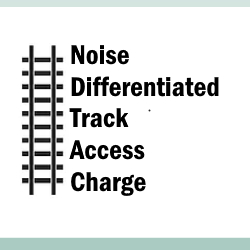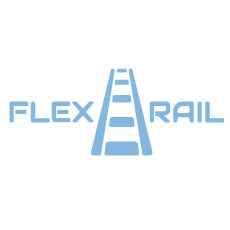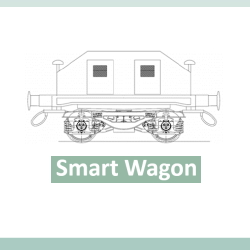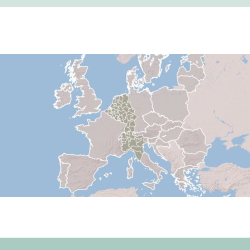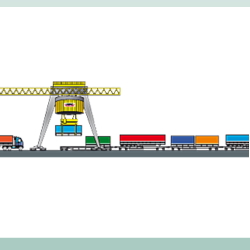- All
- African projects
- assessment
- assessment selected projects
- Assessment selected projects 2
- Assessment selected projects 3
- Assessment selected projects 4
- ASTRA
- Cost Benefit Analysis
- Electric mobility and ITS
- MOMOS
- planning
- planning selected projects
- planning selected projects 2
- planning selected projects 3
- planning selected projects 4
- planning selected projects 5
- projects
- Railways projects
- research
- research selected projects
- research selected projects 2
- research selected projects 3
- studies
- studies selected projects 1
- studies selected projects 2
- studies selected projects 3
- studies selected projects 4
- studies selected projects 5
- TRTingegneria
- TRUST
- urban mobility
- Corridor Munich-Verona – Study and analysis of the forecasted passenger traffic flows and the related offers of long-distance trains based on the future infrastructure This study was a modelling application targeted at forecasting future rail passenger demand on the Verona – Munich rail corridor. The opening of the Brenner Basis Tunnel (BBT) is expected by the year 2030. Its effect will be to save more than one hour from rail travel time between Munich and Verona. The full completion of infrastructure should provide additional time savings by the year 2040. This study, using modelling tools, aimed at forecasting the additional rail passenger demand onto the corridor as effect of new rail supply in order to provide inputs for the design of long-distance rail passenger services on the corridor. Four future scenarios were explored. All scenarios shared the same demographic and economic assumptions influencing the modification of the overall transport demand in the area. Then, each scenario considered a specific configuration of passenger rail services on the Corridor, especially in terms of frequencies and stops. The forecasts were based on the results of the two models: the TRUST model used by TRT dealt with long-distance origin-destination pairs at NUTS3 level, while the regional demand was simulated in more spatial detail by means of the VMÖ 2025+ model used by the Austrian company TRAFFIX. The project was managed by EBP Schweiz AG. For more information, please check BBT Brenner Base Tunnel website
- Evaluation of noise differentiated track access charges schemes: Support study to the evaluation of Implementing Regulation 2015/429 The Regulation 2015/429 establishes rules for Noise Differentiated Track Access Charge (NDTAC) schemes. The purpose of the study is to provide insight on the performance of the Regulation and its impacts in the EU. To that end, it answers 19 evaluation questions grouped under the evaluation criteria of effectiveness, efficiency, relevance, sustainability, coherence and EU added value. The primary geographical scope of the evaluation is the three Member States were the Regulation has been applied (AT, DE, NL), along with Switzerland (the first country to create a NDTAC scheme aiming at reducing rail noise by incentivising the retrofitting of noisy wagons with composite brake blocks). The wider EU is also considered, in order to understand the impacts that the NDTAC schemes in these four countries have had in countries that did not implement such schemes. The analysis is based on data collected from a range of primary and secondary sources including data on the freight wagons fleet and direct input from relevant stakeholders collected using interviews and surveys with rail industry, authorities and a public consultation.
- Flex-Rail – Paradigm shifts for railway – Technology uptake strategies for a lean, integrated and flexible railway system Shift2Rail (S2R, shift2rail.org) develops the building blocks for the future rail system, as envisaged in the Multi‐Annual Action Plan (MAAP). However, S2R’s work programmes need to be continuously monitored and updated to ensure that they optimally make use of the potential of new technological innovations and developments rising in the society, other industries and specifically within the rail sector. The Flex‐Rail project has the objective of identifying and assessing technological possibilities and innovative concepts that can shape rail operating and business models, aiming to contribute to the formulation of required paradigm shifts for the rail sector. In this view, Flex-Rail has the vision to target a lean, integrated and flexible railway system to stimulate further innovation of the rail sector and ensure that rail the services can address the future user needs. In particular, the Flex-Rail project addresses the following aspects: forecast the evolution of key fundamental technologies and identification of technical risks and potential blocking points; analysis of possible achievement of future impacts, through the definition and implementation of an impact assessment framework and modelling tool for rail scenario and transition pathways; formulation of technological concepts for a future rail system scenario developed on a participatory process involving the users of the rail system. Also, the scenarios build on the analysis of trends and innovations happening in other transport sectors; assessment of business feasibility and analysis of the current safety requirements. The Flex-Rail project develops an in‐depth overview of the state of the art of ideas and technological trends related to innovations of the transport industry and non‐transport sector technologies. As such, it constitutes a knowledge basis for subsequent activities focussed on (i) the definition of key performance indicators, which are key assessment components, (ii) the identification of gaps and development of future (rail system) transition pathways and (iii) the impact assessment of these transition pathways and scenarios. A dedicate interactive website has been created to explore technological trends an innovations relevant for rail transport(*). On these basis, a dedicated assessment framework has been designed to determine the impact of innovation packages and transition pathways on a number of key performance indicators for rail transport and per System Platform Demonstrator (SPD), as defined in S2R’s MAAP. A gap analysis for each SPD has been developed, considering the fulfilment of user’s requirements of rail and modal competitors and for different market segments. This has allowed to identify potential market segments and rail modal share growth. By evaluating such possible paradigm solutions, with aligning or enabling trends and technologies, future scenarios have been developed and assessed on the basis of an open-innovation process for collecting additional future requirements. Among its activities, Flex-Rail mapped projects, studies, initiatives and experts’ groups outputs related to new technologies and trends within and outside the transport sectors that may directly and indirectly have an influence on the rail transport sector. Mapping such these activities ensured coherence with the worldwide […]
- Modal shift in European transport: a way forward The study, developed for the TRAN committee of the European Parliament for the Year of Multimodality (2018), provides a comprehensive analysis of the progress and potential of modal shift in the EU from road to more sustainable transport modes, with respect to the policy objectives set in the 2011 White Paper on transport. The study focuses both on passenger and freight transport, highlighting the main barriers and factors that are hampering a more effective modal shift at EU level, providing policy recommendations for the way forward. The analysis carried out highlights that, at EU level, a modal shift from road to more sustainable transport means (rail, inland waterways, public transport) is taking place at a lower pace, compared to the objectives previously set. The relevant measures proposed, besides broadly confirming the actions so far undertaken, include the increase of investments on multimodal projects, the improvement of multimodal access and connectivity of all the EU regions and to enhance the use of ITS technologies. [tw_button icon=”” link=”https://www.trt.it/archivio-progetti/” size=”small” rounded=”false” style=”flat” hover=”default” color=”#223468″ target=”_self”]Projects[/tw_button]
- Automatic Rail Freight Transport System – Analysis of Transport Costs The study developed the feasibility analysis of an innovative and automatic rail freight transport system and elaborated a business plan to assess its economic and financial sustainability. The aim of introducing automatic vehicles for rail freight transport is that of enhancing the internal efficiency of the production system (e.g., in intermodal terminals and logistic centres), by reducing the operating costs and vehicles manoeuvring. Also, the use of automatic vehicles allows to optimise the shipment of cargos from intermodal terminals and logistic centres to transport networks to which they are connected. Further to this, the advantage of using automatic vehicles is twofold. First, automatic vehicles support higher safety levels of the operations avoiding internal collisions (i.e., vehicle-to-vehicle communication and knowledge of the relative position). Second, they reduce the environmental impact, optimising manoeuvring and needs of energy and fuel. The analysis developed an estimation of the operating costs of three scenarios, considering rail-road intermodal transport of semi-trailers, and compared them against the “as-is” situation as follows: wagon towed by a manoeuvring bogie equipped with a traditional coupling system; automatic manoeuvring wagon equipped with a traditional coupling system; automatic manoeuvring wagon equipped with an automatic coupling system. The estimation of the costs shows that there exists a competitive advantage for transporting by rail. With respect to road transport, the difference of cost of transporting by rail increases for longer trips and if a higher level of automation is introduced. The most important advantage of the Smart Wagon system, compared to conventional transport systems, can be obtained when specific conditions hold, namely in contexts such that the demand of freight transport is weak and spread. For example, within ports characterized by a multiplicity of connected internal terminals, the Smart Wagon system would allow to develop transport solutions that merge the demand generated in each internal terminal and share the final destination. Some aspects deserve consideration before implementing an automatic manoeuvring wagon system. First, the cost of feeder legs, which is often a critical cost component for choosing intermodal transport (i.e., the magnitude of the cost is proportional to the length of the trip). Second, with respect to transporting only via road, one should take into account the longer time of the trip, due to two modal shifts (i.e., road-rail and viceversa) and additional waiting times before the train run.
- Transport Market Study: Quantification of modal shift potential on the Rail Freight Corridor Rhine-Alpine The study, coordinated by TRT and involving relevant partners across Europe, aimed to quantify the potential modal shift to rail thanks to the improvement in transport performance on the Rail Freight Corridor Rhine-Alpine. More specifically, the objective of the study was to investigate the possibility to introduce: heavier and longer trains, faster trains (less stops), more reliable trains. The work was structured by three consecutive activities: analysis of the freight transport demand, quantification of the cost savings in relation to heavier, faster and more reliable trains, quantification of modal shift potential. For more information The Transport Market Study summary report is available for download here
- Gathering additional data on EU combined transport This study, committed by DG MOVE to TRT and MDS, presents a detailed analysis of combined transport (CT) operations in the European Union (EU) and provides quantitative and qualitative evidence of the current status of the European CT sector. By updating the information with respect to the 2015 fact-finding study (entitled “Analysis of the EU Combined Transport”) the study was designed to help DG MOVE to identify measures that would be effective in supporting the CT sector. The analysis was supported by a survey, which allowed the consultants to collect primary data on CT operations for the reference year of 2015 from a full cross-section of EU Member States for different modal combinations and industry sectors. For each combination of modes, detailed data on the volumes of transhipments and the main costs involved in CT operations are analysed and discussed both at a European and a Member State (MS) level and further analysed through a series of statistics and indicators. The study also examines the current use of regulatory support measures introduced by Directive 92/106/EEC; these measures address issues such as own-account transport and road haulage cabotage. By offering a number of indicators on CT operations and insights into the related legislative framework, the study represented a key information source for the completion of the European Commission’s Impact Assessment of the amendment to Directive 92/106/EEC.


